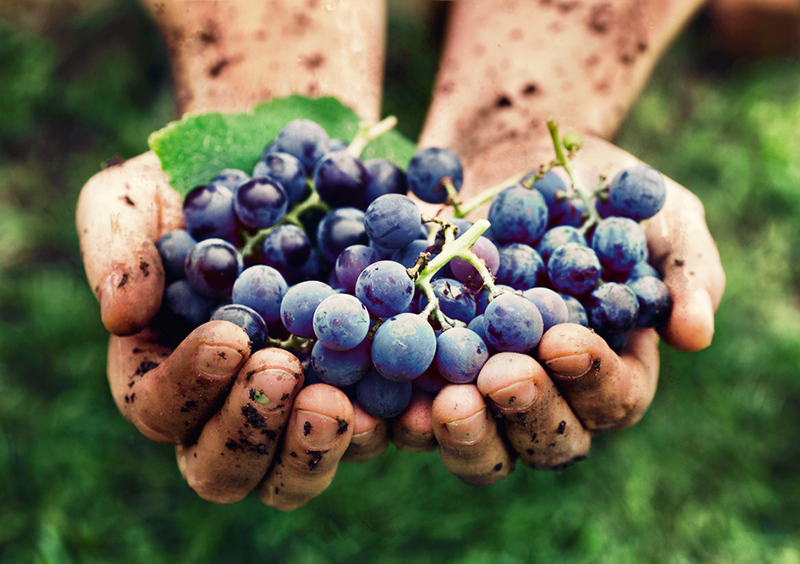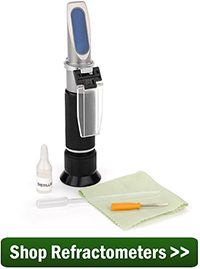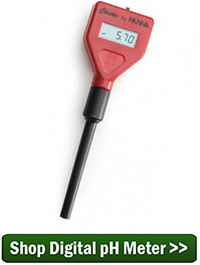 Making wine from a grape wine kit is relatively straightforward. You have the directions and the other ingredients pre-measured. But now that you’ve grown more comfortable with making wine from these kits, you’re ready for the next level: making wine from grapes. It’s not really all that different from making wine from a wine concentrate?
Making wine from a grape wine kit is relatively straightforward. You have the directions and the other ingredients pre-measured. But now that you’ve grown more comfortable with making wine from these kits, you’re ready for the next level: making wine from grapes. It’s not really all that different from making wine from a wine concentrate?
Most of the process is the same. However, the first few steps is where making wine from grapes becomes more involved and just a little more complex. You can no longer rely on the wine kit producers to prep the grapes for you. It’s now up to you!
Choosing The Wine Grapes:
When making wine from grapes, the first thing you’ll need to determine is what variety of grape you will be using, and where you will be getting these grapes.
What it boils down to is: what kind of wine do you like to drink? Are you a big red fan? Then maybe don’t buy Sauvignon Blanc grapes, buy Cabernet Sauvignon! You get the idea.
Next, you’ll need to decide where you wish to purchase your wine grapes. Are you looking for a particular style – say a Napa Cab? Maybe you just want to find the source that’s closest to you – for example a mid-western variety such as Chambourcin or Vignoles. Depending on the time of year and place, you may only have a few varieties to choose from.
Inspecting The Wine Grapes:
 This is where making wine from grapes gets down and dirty. Squeeze a couple of grapes in between your fingers and taste the juice. Fill a hydrometer jar with some of the juice, and use a gravity hydrometer to measure the sugar content of the juice. If you want to get more serious, a refractometer also works good for testing the grapes and only require a drop or two of juice to do so. Ideally, you’re looking for a reading somewhere between 22 and 24 Brix.
This is where making wine from grapes gets down and dirty. Squeeze a couple of grapes in between your fingers and taste the juice. Fill a hydrometer jar with some of the juice, and use a gravity hydrometer to measure the sugar content of the juice. If you want to get more serious, a refractometer also works good for testing the grapes and only require a drop or two of juice to do so. Ideally, you’re looking for a reading somewhere between 22 and 24 Brix.
Washing and Sorting The Wine Grapes:
You will want to wash the grapes lightly to remove any dirt, debris or any other foreign matter.
Preparing The Wine Must:
Now that you have the wine grapes ready to go, it is time to de-stem, crush and press the grapes:
- De-stemming The Wine Grapes:
This is something that can be done by hand. It’s simply a matter of pulling the grapes from the stems. If you have a larger amount of grapes, you may find it necessary to invest in a de-stemmer. Not only does the de-stemmer remove the stems, it crushes the grape, as well. Which happens to be the next step…
- Crushing The Wine Grapes:
One of the most common mistakes when making wine from grapes is over-crushing the grapes. You do not want to shred or macerate the grapes. You only want them to be crushed enough to break the skin. Nothing more is necessary. Crushing the grapes beyond this can lead to a wine with excessive tannin and bitterness. Crushing can be done by hand, but again, if you have a large number of grapes, you may decide it best to invest in a crusher/de-stemmer, or at least, a grape crusher.
- Pressing The Wine Grapes:
Most beginning winemakers will find it surprising to discover that most of the time the grapes are not pressed until after the first 3 to 5 days of fermentation. This is almost always true for red wines and sometimes even for whites. You want the pulp in with the fermentation. This is where the wine gets most of it’s flavor and body – from the pulp and skin of the grape. With white wines the pressing usually comes first – before the fermentation has started. While you can squeeze the grapes by hand or be some other rigged means. You will most likely want to purchase a wine press. They are available in several different sizes. A press will allow you get more juice/wine from the pulp. So much so, the pulp will have a dry feel to it when you are done – something that can’t be done by hand.
What’s Next?
Once you have the wine must together, the method for making wine from grapes and making wine from grape juice mostly comes back into sync: ferment, rack, etc. – with the exception of pressing the grapes.
 Even though you tested the grapes when purchasing them, you may also want to verify with a wine hydrometer that the must has enough sugar. If not, you will need to add sugar until the potential alcohol scale on the hydrometer reads between 11% and 13%. Most of the time the wine must will already be in this range.
Even though you tested the grapes when purchasing them, you may also want to verify with a wine hydrometer that the must has enough sugar. If not, you will need to add sugar until the potential alcohol scale on the hydrometer reads between 11% and 13%. Most of the time the wine must will already be in this range.
You may also want to check that the pH of the wine is in the correct range. The pH relates to the acidity of the wine. This can be done with either pH papers or a digital pH meter. An ideal reading would be between 3.4 and 3.8. It is important to remember that the pH scale works backwards, so adding more acid blend will lower the pH. You can read more about adjusting acidity on our website.
—————
Ed Kraus is a 3rd generation home brewer/winemaker and has been an owner of E. C. Kraus since 1999. He has been helping individuals make better wine and beer for over 25 years.

How to get an accurate ph. test ? Is PH more of an issue with fresh
grape musts?
Dan, getting a pH reading is fairly easy. You can use pH strips or a pH meter. Both are accurate. pH is more important when dealing with pulp. pH can tell you if you are getting too much tannic acid from the pulp. With juices you do not have this variable. This is why using an acid test kit is sufficient in these situations.
pH Strips
http://www.eckraus.com/narrow-range-ph-control-papers.html
pH Meter
http://www.eckraus.com/ph-meter-hand-held-with-atc.html
Acid Test Kit
http://www.eckraus.com/acid-test-kit.html
You have given very good guidance for making wine at a home
Choosing The Wine Grapes
The most important aspect of learning how to make wine at home is choosing the right grape variety. There are essentially three categories of grapes available which include native wild, native wine, and European wine grapes. These grapes differ in their sugar content and pH levels offering grapes of different flavors, sweetness, and sharpness.